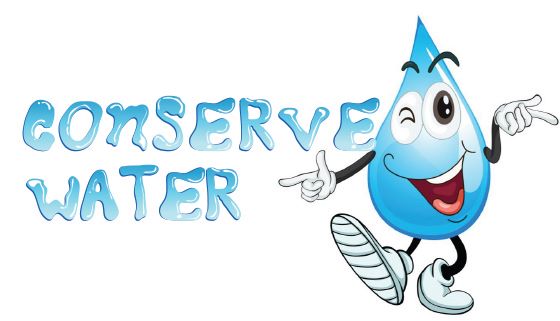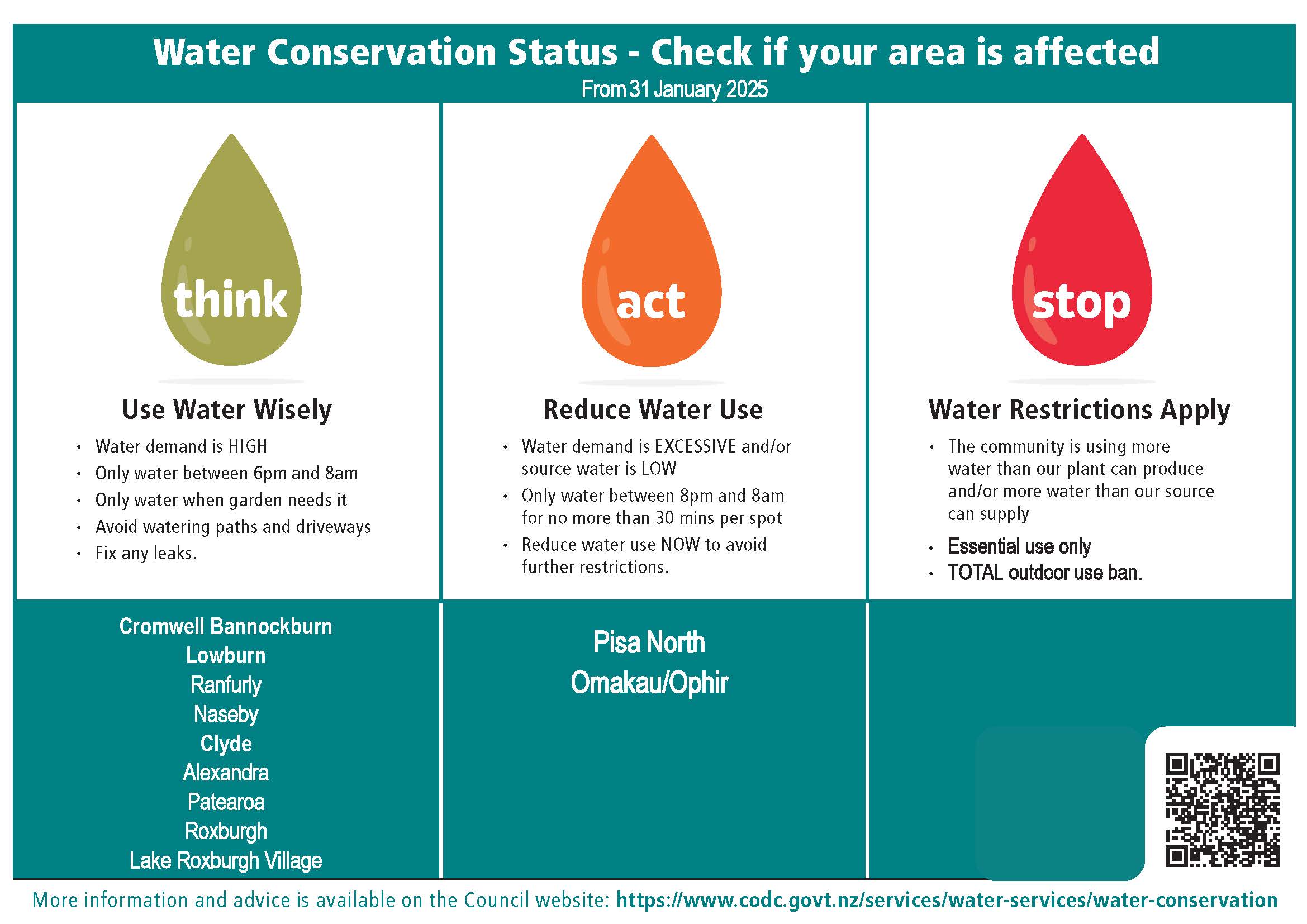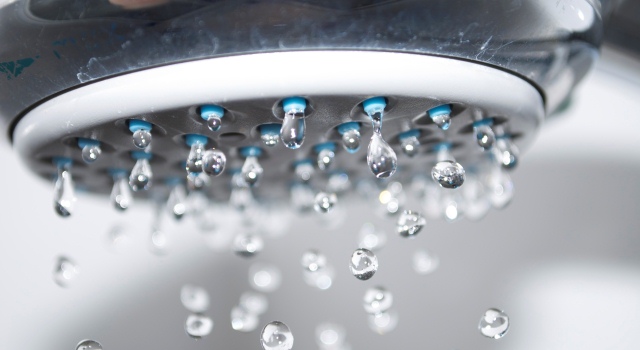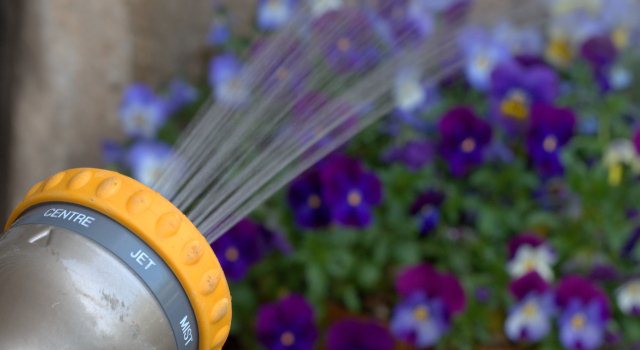Water Conservation

Watch the Drops
It’s crucial that we conserve water to ensure a sustainable supply for everyone, especially during the hotter months when water usage significantly increases. Your area's water conservation status is updated regularly on our Alerts listings on the website landing page:
Watch the Drops - Jan 2025 update
Why we implement summer water restrictions?
Water conservation and restriction notices are implemented to manage the high demand for water during the summer months, to ensure that our treatment plants can keep up with demand and meet our regulatory requirements to protect our water sources. During summer, the largest water use comes from outdoor activities, including the irrigation of gardens, lawns and some of our community green spaces.
The Watch the Drops programme is designed as a traffic light system to help each community understand the existing level of demand on the water network and where we need to be taking extra care to use of water wisely.
The three main categories are:
- Green - use water wisely
- Orange - conserve water
- Red - restrict water use
By following these restrictions, we can ensure that our community has enough water to meet everyone’s needs throughout the summer.
Let’s work together to conserve water and protect this precious resource. Thank you for your cooperation!

Water Conservation status as of 31 January 2025.
Why Save Water?
Why with a river the size of the Clutha flowing through our district, do we need to save water?
While there is not necessarily a water shortage in the district, it costs money to treat and distribute water for domestic consumption. Saving water is good for our pockets and good for the environment.
As ratepayers we pay for both the water we use and the infrastructure needed to treat and pipe that water.
Reduced water use means lower total water production and wastewater treatment costs. Using only the water we actually need not only saves money now it also puts off the need for more infrastructure such as dams and reservoirs, pipelines, and water treatment plants and even the need to find new water sources to service a growing demand.
Saving water also helps reduce wastewater treatment costs. The water used around your home including your washing machine, bathrooms and toilets, is discharged to the sewer for treatment and disposal at the wastewater treatment plant. Saving water also helps delay the need to increase wastewater treatment plant capacity and reduces the volume of wastewater treated and discharged into the rivers and waterways.
- Pumping water from the source, treating it and piping it to your door is expensive. If we all use less water we can lower the cost of providing it.
- Excessive summer water use means the water supply system has to work hard to keep up with demand. In some places excessive use can affect availability for fire fighting.
Every Drop Counts
When it comes to conserving water, every drop counts. You can do your bit to help save water by:
- Reporting leaks from hydrants, a toby (your main water shut-off valve) or anywhere else
- Fixing leaking taps, toilets, showerheads and other water-using devices around your home or business.
- Learn how to use your meter to check for water leaks. Most are easy to detect and repair with basic know-how and the right tools.
For water saving tips around your home, school or workplace check out the sections below.
Council's Water Conservation Efforts
Council is also working to reduce its water use by:
- Installing more efficient watering systems on town reserves and gardens and using untreated bore water where possible
- Providing public education campaigns promoting wise water use.
- See more about our Water Conservation Garden located in Cromwell.
- Read the Changing How We Use Water brochure Council produced in conjunction with Jo Wakelin from Otago Polytchnic Central Campus, which gives great advice about landscaping with less water in Central Otago.
Save Water at Home

There are many ways to save water around your home. Much of the water we use is wasted and a few small changes can help save water and we don't mean by going short or without water. Try these:
- Singing shorter songs in the shower: every minute that you don't spend in the shower saves you seven litres of water. Reduce your shower by one minute, and you'll save about 2500 litres of water a year.
- Turning off the tap when brushing teeth or shaving: a running tap wastes 10 litres per minute.
- Plug that sink when you're preparing vegetables. It'll save you up to 10 litres per minute.
- No half measures in the kitchen or laundry: a full load of dishes or laundry uses less water and power than two half loads.
- A scrape will do! Today's modern dishwashers and detergent mean there's no need to pre-rinse, just scrape and pop the dishes in the machine - give it a go, you might be surprised by the results.
Other things you can do include:
Check for leaks
Leaking taps, *toilets, showerheads and other water-using devices are major wasters of water. Just one leaking tap can waste 2000 litres per month and increase your water bill unnecessarily. Most leaks are easy to detect and easy to repair with basic know-how and the right tools. Use your water meter to check for leaks.
*Toilet tip: Check for leaks in your toilet by adding a few drops of food colouring to the water in your toilet cistern. Then, after waiting 15 minutes, you can check if the water in the bowl has any of the colour in it (smartwater.org.nz).
Use Water saving devices
There are many water saving devices you can buy that reduce your water use - flow regulators (to reduce the flow of water), dual flush toilets and water displacement devices that go in the cistern (gizmos') for single flush toilets. Many devices aren't very expensive.
Use water wise appliances
Shop with the stars! Save water and money in the long run by choosing water wise appliances. Look for the stars. The more stars on the label the more water efficient the appliance. So if you're replacing an old washing machine or toilet choose models with four stars or more. More information about water efficiency.
Save Water at School
Save water around your school. Look for water saving plumbing solutions and promote good water use habits. Water-saving mechanisms in schools educate young people about using water wisely and the need to protect the environment. What children see at school can influence behaviour at home.
- Fix Leaks Schools can save water by promptly fixing all leaks. Students should be encouraged to notify teachers as soon as they detect a problem in a restroom or water fountain. A water audit of your school can find hidden leaks that can waste lots of water and money.
- Install water-wise plumbing Schools can install waterless urinals, dual-flush toilets, and taps that turn off automatically after a set amount of time.
- Promote Wise Water Use Talk to children about smart ways to use water such as hand washing techniques and turning taps off.
- Incorporate water-wise landscaping Use plants that don't require much water in landscaped areas. In addition, water crystals can be added to soil to enhance water retention by as much as 40 per cent.
- Cleaning Hard surfaces should not be hosed except in exceptional circumstances. Where possible use a broom or a mop.
Save Water at Work
Water is a valuable resource yet all too often we take it for granted. Whether your business is large or small it can benefit from using water wisely. Using water wisely is part of planning for a sustainable future and demonstrates corporate responsibility.
Benefits of saving water at work:
- Save your business money. Saving water will have a direct and positive impact on your water bill. Reducing hot water use will also reduce the energy needed to heat water and therefore reduce your electricity/gas bill.
- Be seen as environmentally friendly. Demonstrate to customers the importance your business places on caring for natural resources and the environment.
- Water treatment uses energy. Save water and you'll reduce your carbon footprint.
Five tips for saving water at work
- Install dual flush toilets A full toilet flush sends 12 litres of water down the drain. A dual flush toilet can use as little as three litres in a flush. If you have a single flush toilet, you could install a cistern displacement device, often called a gizmo. Depending on the size of the cistern, these devices can save one to two litres each time the toilet is flushed. If you do use one, make sure you check the manufacturer's instructions to make sure the device is suitable for your toilet.
- Repair dripping taps Fixing these could save as much as 2000 litres of water a month. In most instances all that's required is a new washer.
- Install urinal controls On average, an unmanaged cistern flushes four times an hour 24 hours a day. Sensor controlled urinals can reduce the amount of water used as the urinal only flushes after use.
- Measure and monitor Use meter reads to compare your water use so that you can identify any unusual patterns.
- Make your staff aware of how they can save water Reporting leaking or dripping taps and using a plug in the sink when you rinse dishes are easy ways to save water in the workplace.
Save Water in the Garden

Being water wise in the garden and outside your home or business means we reduce the amount of high quality drinking water used on lawns, plants and pavements. Sprinklers are the biggest cause of unnecessary water usage as the water often goes where it is not needed and it's easy to over water.
Water wise tips in the garden and outside
- It's a lawn not a lake! Even in the height of summer, more water is not necessarily better
- If the grass springs back when you walk on it, there's no need to water.
- Install a rain barrel: rainwater is rich in natural minerals and plants love it. A rain barrel is a great way to cheer up your plants and keep your water bill down.
- Use a bucket to wash your car. This uses up to 125 litres less water than a hosepipe does.
- Simple mulch for your garden reduces the water that evaporates by up to 70 per cent and means less time spent watering.
- Water in the early morning or evening to reduce water lost to evaporation.
- Sweep paths and drive ways instead of washing them.
- Use a watering can or a hose with a hand-held trigger to minimise wastage and direct water only where needed.
For more efficient irrigation
- Check soil moisture - if your soil is moist 10cm below the surface, you don't need to water.
- Water in cool, settled weather - water your garden on calmer days, in the cool of early morning or in the evening.
- Aim low and slow - water close to the ground at a rate the soil can absorb.
- Using a sprinkler - established plants should only need 30 minutes watering once or twice a week in dry weather.
- Use mulch - mulch protects your soil from the drying effects of wind and sun, and can cut evaporation
For more information download our Changing How We Use Water: a guide to landscaping with less water in Central Otago brochure.
Alternate Water Sources
- Find out more about Using Greywater
- Greywater Guide poster
- Find out more about Using Rainwater
- Rainwater Guide poster
Brochures with More Tips
- Savings in your House (NZ Water & Wastes Association)
- Saving Water Around Your Home (CODC brochure)

